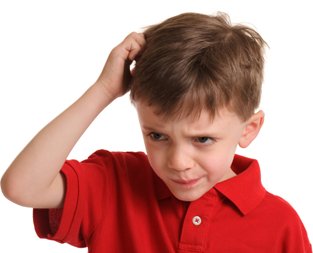

Childcare providers in group settings strive to teach children the importance of sharing, but one of the things most easily shared in such close quarters is head lice. Through play and socialization, including the sharing of brushes, hats and clothing, kids can quickly spread head lice throughout a group until it becomes a widespread problem. While it’s a common childhood ailment, there is a stigma associated with head lice which can be a bit damaging to a childcare provider’s reputation if an outbreak isn’t addressed appropriately. Learning the best methods of addressing head lice outbreaks, and preventing them in the first place, is crucial to the health of your business.
One of the most pressing challenges faced by childcare providers who work in group or center-based settings is teaching children about sharing while establishing appropriate boundaries. After spending years emphasizing the importance of good friendship and sharing, it can seem counterproductive to directly instruct children not to share certain things. Still, one of the most effective lines of defense available to a childcare provider in preventing the spread of head lice is teaching children not to share the things which can transmit them from one host to the next. Talking about the difference between appropriate and inappropriate sharing is important, and can minimize the risk of a group-wide head lice epidemic.
While very young children may just be terrified by the idea of small insects living in their hair, older children can grasp the basics of head lice transmission. As such, they should be encouraged to avoid sharing hats, hair grooming products and head-to-head contact. Still, best friends will hug one another and share their things, so it becomes equally important to work with parents about the risks of such behavior in terms of spreading head lice.
Childcare providers should always maintain an open line of communication with parents and guardians, making sure they’re aware of the highly contagious nature of head lice. Encourage parents to check their children’s hair regularly, and to report a case of head lice if they discover their child is affected. Fostering a judgment-free relationship can help parents to overcome the associated stigma, and can encourage them to report an isolated case before it becomes a group-wide problem.
While it’s imperative that childcare providers actively work to prevent the spread of head lice by teaching good habits and appropriate sharing, it’s equally important for childcare providers to be aware of the signs of head lice.
The movement of lice through children’s hair and across their scalp can cause itching or tickling sensations, which leads children to instinctively scratch their heads. Observing children who seem to scratch their heads excessively, and paying attention to those who complain of scalp itchiness, can help to limit the spread of head lice. In cases of prolonged infestation, sores may erupt on a child’s scalp as a result of scratching and secondary infection caused by bacteria under the fingernails. While a childcare provider should never single a child out, it is wise to notify parents of a potential outbreak, even if there have been no reports of head lice, if one or more children exhibits such signs.
To prevent recurring outbreaks, it’s advisable to send letters of notification to parents which include information on not only the treatment of scalps, but also bedding and hair styling tools. Documenting a case of head lice should be treated with the same attention as any other incident report, though notifications should be sent to each and every parent on your client roster. Reminding parents that contracting head lice is not an indicator of poor hygiene or negligent parenting may also help to soften the blow, as an estimated one in ten children will contract head lice at some point in their school career.